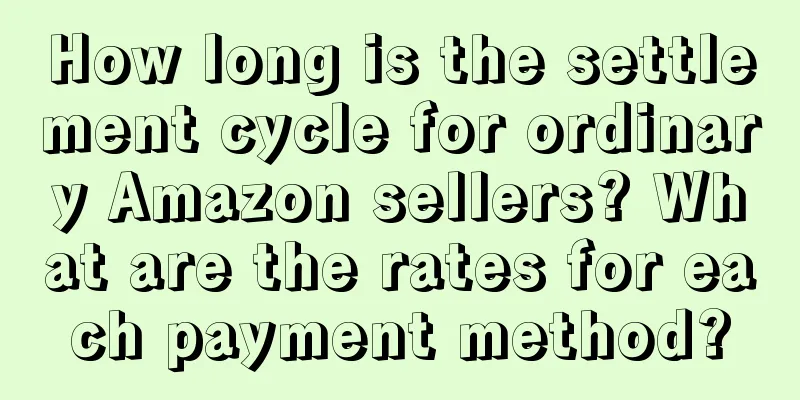Compared to physical products that are easy to go viral, how can “online products” create social currency?

What are we talking about when we talk about “Internet celebrities”? The circle of friends is full of it, it is a popular trend on the whole network, countless people follow suit, brands enter the market one after another, hot products, purchasing power... But no matter which one, the powerful social communication power reflected behind the "Internet celebrity" is something that makes everyone who works in branding and marketing jealous. It can spread wildly like a virus, from point to surface, from local to overall, and quickly sweep the social network. Therefore, everyone is racking their brains to create endless internet celebrities and internet celebrity brands, and launching wave after wave of popular products, such as the frisbee that was popular some time ago, the bamboo tube milk tea that has been popular recently, the keep trophy, Zibo barbecue, etc. Internet celebrity hits mean popularity. If you want to make a product, idea, or brand popular, creating social currency is a very common and typical method. By building up their own "social currency", brands can, on the one hand, allow consumers to build word of mouth through spontaneous dissemination, and on the other hand, achieve exponential growth in business through the dissemination method of social fission. So, what exactly is “social currency”? 1. What exactly is social currency?When it comes to the concept of "social currency", there are many different opinions on the Internet. Some people define it as a tool to measure users' tendency to share brand-related content, some define it as a kind of consensus that people are willing to spread, and some broadly summarize it as "topic for conversation." In my opinion, there is no standard answer to the definition, as long as it can help us make correct thinking and decisions. I tend to dig deep into the word "social currency" and find out where it can be used for us, so let's break it down into two words to explore what "social currency" is: 1. Social"Social" is a prerequisite, which determines that its usage scenario must be a social scenario of interaction between people. The most typical manifestation of social interaction is "display", and when people are willing to actively display it, it becomes "sharing". The people who are shared are often in the same "circle" as the sharer, or it can be said that a circle is formed because a group of people share the same cultural content. Therefore, social currency has a strong circle nature. If it can be widely popular in a larger circle outside a certain established circle, it can be called "breaking the circle". Therefore, the way we judge whether a product or brand has created social currency is to see whether users are willing to spread it spontaneously, actively, on a large scale and in a centralized manner. 2. CurrencyThe essence of "social currency" is a kind of currency, so it has three characteristics: 1) Value After using social currency, users need to be able to demonstrate their own value. For example:
In addition, the classic marketing book "Contagious" also mentioned that people tend to share things that are beneficial to them, which includes both the content of the sharing that has a direct value connection with them and the sharing of certain funny jokes, current hot topics, novel news, etc. that can make themselves noticed by the public. People like to share their opinions, just like they like to pay for consumption, and the fact of "being noticed by others" itself can make the sharer feel excited and excited. So no matter what, the driving force behind people’s willingness to share is “it reflects some kind of value of their own.” 2) Liquidity In the process of information dissemination, the communicator, the message, the recipient, etc. are all very important factors, and the same is true for the dissemination of social currency. For example, most of us Chinese know what Zhonghua cigarettes and Maotai liquor mean. Giving them as gifts shows that we value the other party. However, if we give this gift to an African friend who knows nothing about them, he may not think it is a good gift. But if we replace it with a high-end gift in his cognition, or even just a beautiful new dress, the other party will think it is great. Therefore, in the current social scenario, Moutai does not constitute "social currency", or it is a consensus reached by everyone that social currency exists in established cultural circles. If a brand wants to create a good social currency, it needs to improve and expand its liquidity and clearly explain its value so that a wide range of potential audiences can understand it. 3) Purchasing power Currency has purchasing power, and social currency is no exception. This is the core of social currency. There is a vivid metaphor in the original book "Contagious": "Just as people use currency to buy goods or services, using social currency can gain more praise and more positive impressions from family, friends and colleagues." The objects of purchasing social currency are very broad, and can be other people's attention, comments, recognition, envy, praise, good impression of you, etc. To sum up, social currency refers to the value that a person can highlight in social situations. Therefore, the social currency people need is: a tool (or medium/means) that can highlight their own value; a tool that can be well understood by others in a social environment; and a tool (or medium/means) that can be exchanged for recognition from others. Let's analyze these "social currencies" that have become popular recently, such as those who show off their Keep medals on social platforms. Are they all sending a signal that "I am self-disciplined and healthy, come and praise me!" Others can also fully realize that obtaining medals does require certain conditions to be met, and therefore can express positive recognition of this behavior. As a result, more and more people like to show off their Keep medals, gradually forming a social currency that symbolizes self-discipline. 2. How do online products/brands create “social currency”?Above we mentioned the significant value of social currency to brands, so how should brands build social currency? First, let’s take a look at how physical products that are easy to go viral create social currency. Typical examples include Pop Mart, Zhong Xue Gao ice cream, Santonban coffee, new milk tea products, cross-border IP co-branded sneakers… Many people will post on their Moments to show off these products as soon as they get them. So what are the characteristics of these products that are easily shared by others?
If a physical product meets some of the above elements, there is a certain probability that it will become an Internet celebrity product. But as a virtual online product, how can we create our own social currency? To answer this question, we might as well analyze it from the perspective of the hit-making machine NetEase Cloud Music. Not only does NetEase Cloud Music's annual year-end listening report always output stable content that goes viral on WeChat Moments, it also occasionally brings out some hit test H5s. Have you noticed? The commonality of these test reports is "praise". They praise you from all directions and angles. If your test results are relatively rare, they will say that you are niche but tasteful; if your test results are relatively popular, they will praise you for being very popular. Anyway, whatever they say makes sense. More importantly, users particularly like this and use other people's mouths to express the positive qualities and image they want to show. Almost no one will actively praise themselves as "talented, imaginative, straightforward and cute, with good taste" in the circle of friends, but they are willing to share the results report. What is the underlying reason? It is that he agrees with this conclusion in his heart. Only when users recognize you from the bottom of their hearts will they be willing to share, commonly known as "flattering", which leads to the first point of building social currency: 1. Explore the user’s true thoughtsThe launch of social currency is often accompanied by event marketing. In order to achieve the desired effect, brands need to have a very detailed understanding and insight into target users, which can be explored through the following three steps.
For example, the main users of NetEase Cloud Music are college students, who are more self-centered, independent, and confident. The comments they like to hear are often "unique, niche, tasteful, and ambitious", etc. Many evaluation results of Cloud Music are in line with their perception of themselves, so they are willing to forward and share them. 2. Choose the right type of social currencyBrands need to create unique social currencies for users based on their own actual conditions. There are five common types of social currencies:
In addition, there are emotional coins, fun coins, novelty coins, etc. In short, as long as it can bring users the value they need, it is a direction you can choose. 3. Leverage to help users better obtain and demonstrate value"The essence of games is to help us earn social currency that is superior to others, because playing games can make us look smarter and wiser than others." The author gives the example of exchanging airline miles for VIP services. The more airline miles you have, the more value-added services you can get. This will stimulate consumers to continue to do something in order to win them, thus allowing consumption to continue. What brands need to do is to design a good “game mechanism” to make the value tangible and visible, and to demonstrate their superior position over others. 4. Promote social currency
Social currency is not a flash in the pan, but is continuing to ferment. Brands need to continue to pay attention and seize the opportunity to increase investment or change strategy when appropriate. 3. Create short-term social currency or long-term social currencyNo brand can be popular forever, but there are always brands that are popular. Social currency can be divided into two types: short-term social currency and long-term social currency. 1. Short-term social currencyWhat is short-term social currency? What are its advantages and disadvantages? I think the core of short-term social currency is "freshness". Once the freshness wears off, things will return to calm. Today it's still popular to watch Juejuezi, tomorrow everyone will watch Q. Last week everyone was following a new milk tea product, this week everyone is talking about bamboo tube milk tea. Short-term social currency can indeed attract and activate users and generate economic value, but it has little effect on brand value. Short-term social currency can only be used to briefly gain popularity, harvest a wave of traffic and revenue, and then quickly dissipate. If you want to achieve long-term popularity and lasting success, you need to adhere to long-termism, continue to surprise users, and build unique brand assets. 2. Long-term social currency, leading the trendIf a brand wants to build long-term social currency, it needs to build a complete system to occupy the minds of users for a long time and create expectations for every marketing campaign of the brand. There are four ways to create a long-term currency: 1) Content Marketing Borrowing an important concept of B-side "content marketing", it can be roughly summarized as delivering valuable information to users through reasonable content creation, publishing and dissemination, so as to achieve the purpose of marketing. Content marketing can be roughly divided into three categories: BGC, PGC, and UGC.
Brands need to persist in long-term content marketing to reach and influence consumers in an all-round way. However, content marketing has disadvantages such as slow results, high requirements for content quality, and strong professional requirements for practitioners. It requires long-term accumulation. 2) Brand Marketing Brand marketing is the process of making customers form an awareness of a company's brand and products through marketing. In my opinion, it is the "image and temperament" that comes to mind when a certain brand is mentioned. For example, when an Apple mobile phone is mentioned, impressions such as "technology, high-end, fashion, and quality" will immediately appear in the mind. So how do you do brand marketing? This is a highly professional and huge issue, so I won’t discuss it in detail. Let’s leave professional matters to professionals. In short, it includes the following points:
3) Product Marketing Product marketing is to attract users to pay. Users need to go through the process of contact-understanding-familiarity-recognition. For example, they first know what bamboo tube milk tea is, and then find that many friends around them are showing off bamboo tube milk tea. After that, under the constant brainwashing of the merchants, they establish the cognition that "when you arrive at a place, you must drink a cup of milk tea with local characteristics/bamboo tube milk tea is a check-in", and finally pay for it and post a picture on their Moments, "Beijing, here I come!" Whether it is content marketing or brand marketing, the focus is on the user awareness level. However, no matter how big the momentum is, it will be useless if users do not pay. From an objective point of view, marketing costs a lot of money. If it does not bring actual revenue, subsequent investment will inevitably decrease, and it will be difficult to support the long-term creation of social currency. Brands need to know how to "create consumption scenarios" to help transform products. The brand, product, and usage scenarios are subtly implanted into the user's consciousness. For example, keep medals are linked to self-discipline, so that users will think "I should show off my medals to show my self-discipline" after running; bamboo tube milk tea is linked to clocking in and popularity, so that tourists will think "I should have a cup of the most popular bamboo tube milk tea to show off" after arriving at the tourist destination. 4) IP Marketing By creating IP, we can continuously attract user attention, deepen brand impression, and occupy the user's mind, because the IPization of a brand is often accompanied by personalization, which allows marketing to have more diverse creativity and gameplay. For example, the frequent popularity of Mixue Ice City is closely related to its IP Snow King. The jokes and secondary creations such as the blackened Snow King and the battle with the frog are very popular on social platforms, which has brought Mixue Ice City into people's vision time and time again. IV. ConclusionThe social currency of a brand is a tool for forging a consensus identity between the brand and its consumers. For users, social currency is based on value recognition, cultural recognition and identity recognition. When users spread the word on their own time and time again, brands or products are constantly mentioned and circulated, gradually forming a social currency in a certain circle. For the brand, every appearance and dissemination becomes a new opportunity to communicate with new and old users. Author: Manman, a deep thinker and operator of a large Internet company who loves to think, analyze and summarize. |
<<: The young man "selling" in the live broadcast room: some people watch but no one buys
>>: There are so many money-making projects, how to choose?
Recommend
Don’t be a third-rate brand. Dismantle the brand assets of Lego and Patagonia
Under the impact of the digital wave, brand buildi...
Which countries are included in Amazon's European and American sites? How to operate Amazon well?
Amazon is one of the world's largest online re...
Pinduoduo Temu's Compliance with Japan's Consumer Product Safety Law (PSC)
Pinduoduo Temu merchants please note that the Japa...
What are the cross-border payment app platforms? Tell you how to choose
With the continuous development of the global econ...
Only if you understand the business, people in the TOB market can stand up straight!
In many companies, firstly, the positioning of mar...
What are the tips for printing Amazon FBA labels? Tips to share
Amazon products are generally stored in warehouses...
WeChat Stores will reshape the future of WeChat e-commerce
The launch of WeChat Stores heralds a major shift ...
Does PayPal require a fee? Is there an annual fee?
There are many credit card payment methods that ca...
What is the difference between Amazon's overseas self-operated business and overseas shopping? Which one is better?
Many friends on Amazon will choose to buy goods in...
Does Amazon have a Double 11? What are some shopping tips?
Amazon is a cross-border e-commerce platform. Dome...
How did this analyst go from making decisions based on intuition to supporting them with data?
Why can analysts make data-supported decisions? Th...
Will Shopify ban my account if I change my address? What actions will lead to a store ban?
Many merchants who want to build independent websi...
If the hundred-yuan burgers are not selling well, do the 9.9-yuan burgers have a new opportunity?
As Shake Shack closes stores in China, the surviva...
How can cross-border e-commerce increase the add-to-cart rate? How can it increase the conversion rate?
With the continuous development of global trade an...
What are the rules for Amazon's flash sales? How can I participate in Amazon's flash sales?
As one of the world's largest e-commerce platf...









